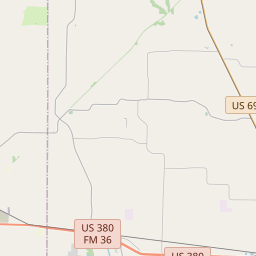Woodlawn Cemetery
Historical marker location:






This cemetery, located along the historic lower Bonham Road on the site of the Old Rock Rest Church and School, was first used during the 1870s. The two and one-half acre plot was deeded to cemetery trustees George A. Wilson, William W. Wallace, and T.C. Boone in 1882. Woodlawn Cemetery is the burial place for many Collin county pioneers. Jimmie Geigas, the first soldier from McKinney killed in World War I, also is buried here. With most of the graves dating before 1900, Woodlawn remains a significant example of a pioneer cemetery.
(1984)
Incise on back: Given in memory of Mary Klapper Benton, daughter of Philip and Mary Klapper, by her great nieces Lois Head and Birdie Moorhead
As one of the most visible programs of the Texas Historical Commission (THC), historical markers commemorate diverse topics in Texas history, including: the history and architecture of houses, commercial and public buildings, religious congregations, and military sites; events that changed the course of local and state history; and individuals who have made lasting contributions to the state, community organizations, and businesses.
The state of Texas was once an independent country known as the Republic of Texas. It gained independence from Mexico in 1836 and was a separate nation until it was annexed by the United States in 1845.
Established in 1846, Collin County derived its name from Collin McKinney, a prominent figure in early Texas history and one of the five drafters of the Texas Declaration of Independence. The county played a significant role in the state's development during its early years.
Throughout the 19th century, Collin County prospered due to factors like the expansion of railroads and the establishment of agricultural communities. Cotton farming became a key industry, and towns such as McKinney, the county seat, flourished with commercial and cultural activity.
In the 20th century, Collin County continued to evolve. The discovery of oil, the growth of suburban areas, and the establishment of technology companies fueled its economic development. The county transformed into a thriving and diverse region with a robust economy encompassing sectors like technology, healthcare, and finance.
Today, Collin County stands as a testament to its rich heritage. With its picturesque landscapes, historic downtowns, and vibrant communities, the county has become an attractive destination for residents and businesses alike. Collin County embraces its history while embracing the opportunities of the present, maintaining its position as a dynamic and prosperous part of the great state of Texas.
Collin County Timeline
This timeline provides a glimpse into the major events and milestones that have shaped the history of Collin County, Texas.
Pre-19th Century: The area that would become Collin County was inhabited by various Native American tribes, including the Caddo and Comanche.
1846: Collin County was established shortly after Texas joined the United States as the 28th state. It was named in honor of Collin McKinney, a pioneer and one of the signatories of the Texas Declaration of Independence.
Mid to Late 1800s: Collin County experienced rapid growth and development, primarily fueled by the arrival of European-American settlers. Agriculture, particularly cotton farming, became a significant economic driver in the region.
1872: The city of McKinney was named the county seat, named after Collin McKinney. It grew into a prominent center of commerce and government in Collin County.
Early 1900s: Collin County continued to thrive, and communities within the county flourished. The growth of railroads, such as the Texas Electric Railway, further facilitated trade and transportation in the region.
Late 20th Century: Collin County experienced significant suburbanization and population growth, driven by its proximity to Dallas. The county became an attractive destination for families and businesses seeking a balance between urban amenities and a suburban lifestyle.
21st Century: Collin County has continued to expand and diversify economically. It has become a hub for technology, telecommunications, healthcare, and other industries. The county maintains its rich agricultural heritage while embracing modern advancements.